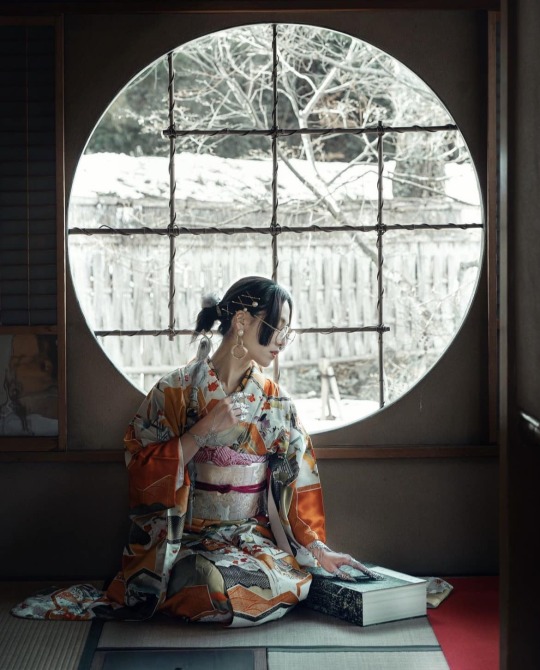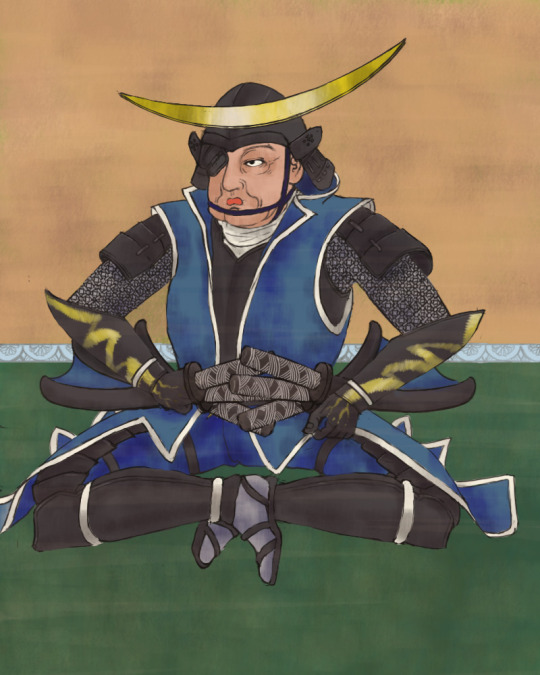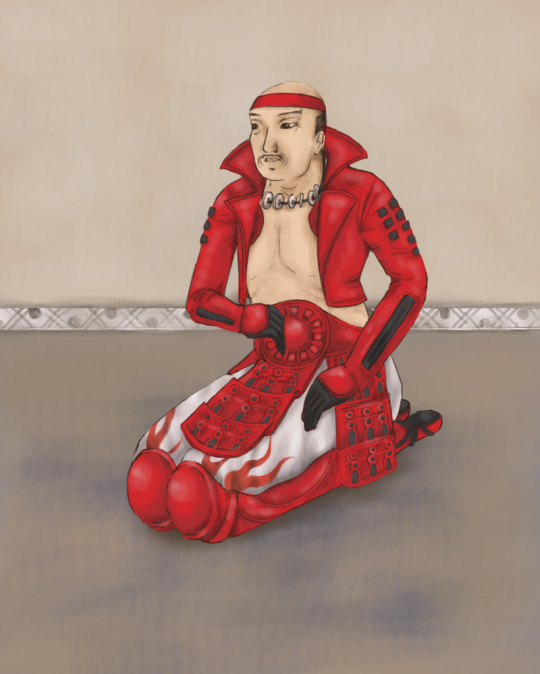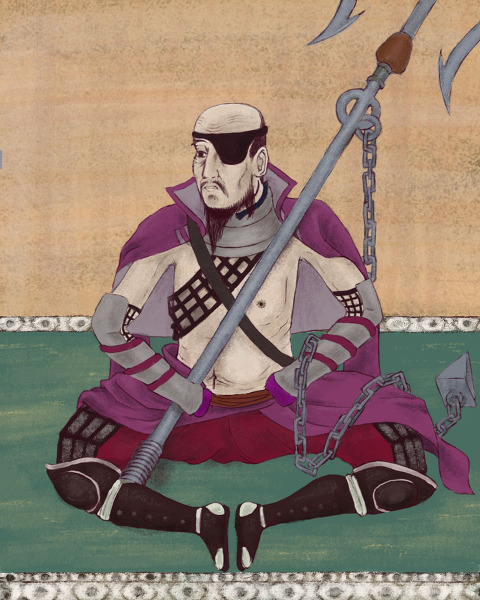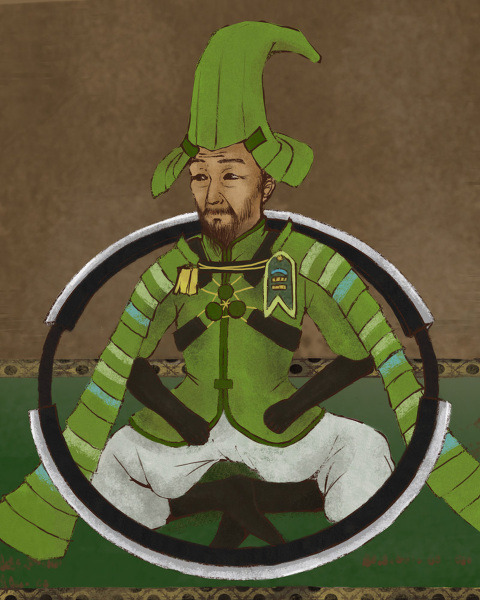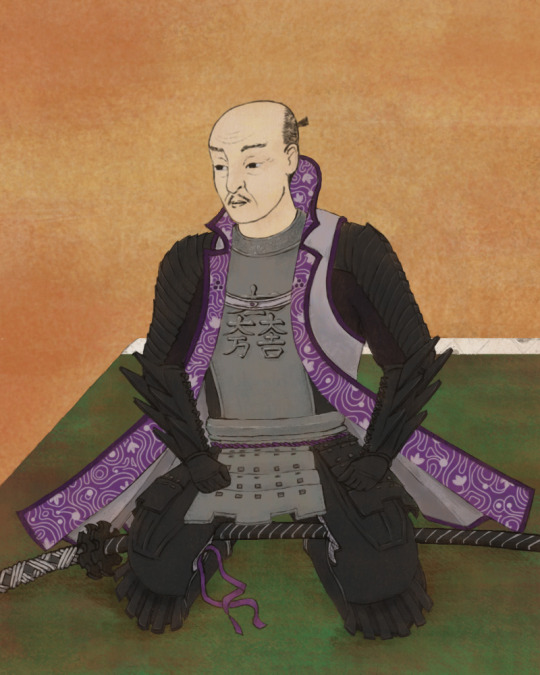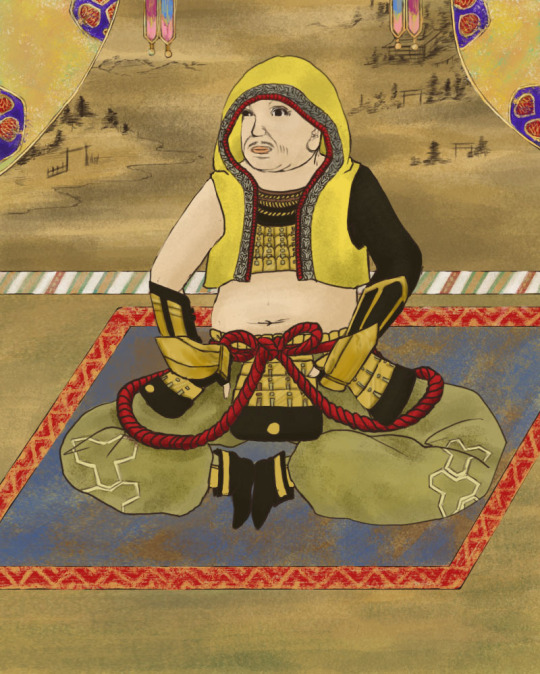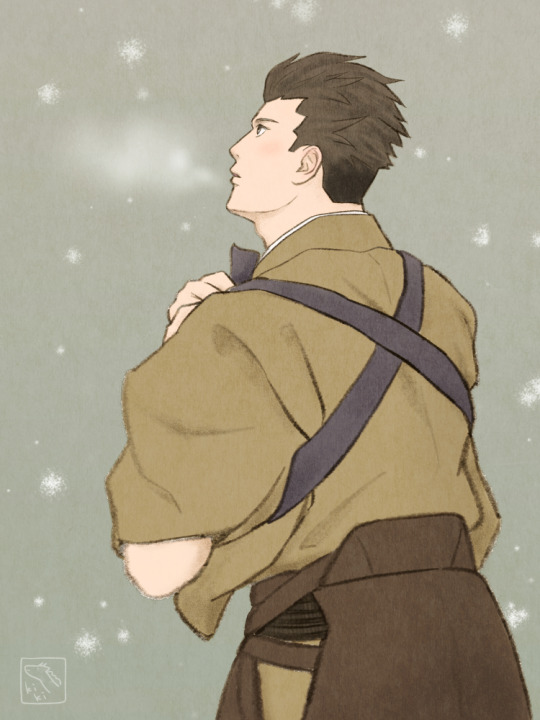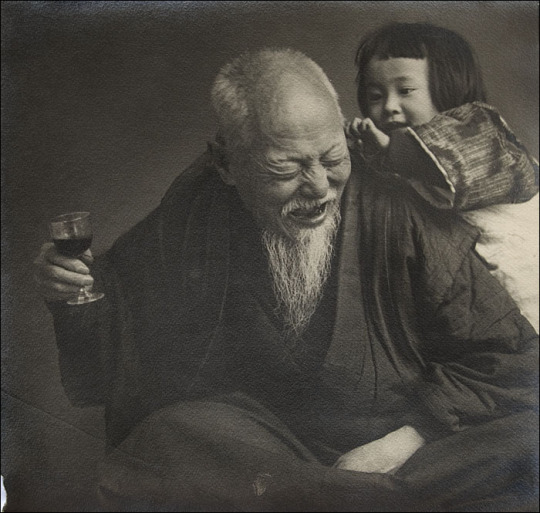Text

HIROSHI YOSHIDA
From the series Twelve Scenes of Tokyo, Kameido [in Japanese] and Kameido Bridge [in English] (Abe 62), dated Showa 2 (1927),
955 notes
·
View notes
Photo

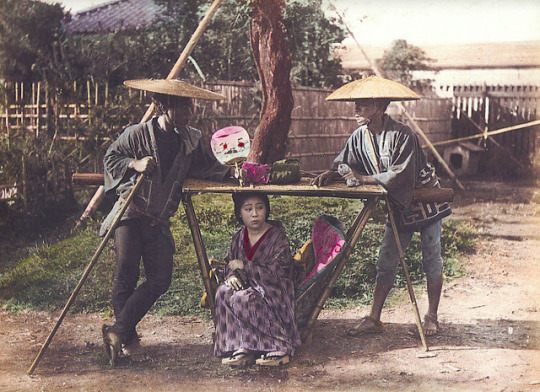


“Girls in Kago”
Photographies colorisées c.1880.
245 notes
·
View notes
Text
Formal outfits for upper ranks samurai & Most formal for lesser ranks samurai - Hitatare, Daimon and Suô court dress,
(as worn by samurai of the Edo period - great charts by Nadeshico Rin). You can find more about samurai ranks and their regulated attires under the tag "samurai kimono".
The Hitatare

直垂 Hitatare first appeared as an attire worn by lower class warriors. As buke (warrior class) rose into status, it was slowy established as a formal garb for samurai during Kamakura period.
In Edo period, hitatare was the most formal attire worn by samurai of the 3rd rank and above. Fabrics used were luxurious, such as 精好織 seigo-ori (a type of textured silk, also used for Shinto priest clothing nowadays).
風折烏帽子 Kazaori-eboshi - black-lacquered hat made of silk, cloth or paper, originally worn by Heian nobility. Many eboshi shapes exist, this one is a upright style (tate-eboshi 立烏帽子) with top folded to the left.
袴 Hakama - formal pants, more exactly 長袴 nagabakama trailing pants
小さ刀 Chîsagatana - a small decorative katana
胸紐 Munahimo - chest ties, first appeared on Heian nobility clothes
菊綴 Kikutoji - decorative tassel-like knots, first appeared on Heian nobility clothes
袖括 Sodekukuri - decorative sleeve ties. Originally appeared on Heian clothings (like kariginu, nôshi, etc) where they were used to tighten sleeve cuffs. Later types like the tiny ones above are purely decorative.
The Daimon

The 大紋 daimon is a specific hitatare set patterned with large 紋 mon (clan/family crests). It was worn by fifth court rank samurai (rank of the daimyô lords for example).
It was put over a 熨斗目 noshime, a type of kosode (=ancestor of the kimono) worn by samurai, with stripes or lattice pattern around waist area.
The Suô

The 素襖 Suô, also a variation of the hitatare, was the ceremonial dress of the lower-ranked samurai. Via explicit permission of the shogunate, some samurai could be granted the right to wear 布衣 hoi (a type of kariginu).
It looked very similar to daimon set, but showed fewer crests of much smaller size. The hat was also different as they wore one called a 侍烏帽子 samurai eboshi.
242 notes
·
View notes
Text
Formal outfits for upper ranks samurai & Most formal for lesser ranks samurai - Hitatare, Daimon and Suô court dress,
(as worn by samurai of the Edo period - great charts by Nadeshico Rin). You can find more about samurai ranks and their regulated attires under the tag "samurai kimono".
The Hitatare

直垂 Hitatare first appeared as an attire worn by lower class warriors. As buke (warrior class) rose into status, it was slowy established as a formal garb for samurai during Kamakura period.
In Edo period, hitatare was the most formal attire worn by samurai of the 3rd rank and above. Fabrics used were luxurious, such as 精好織 seigo-ori (a type of textured silk, also used for Shinto priest clothing nowadays).
風折烏帽子 Kazaori-eboshi - black-lacquered hat made of silk, cloth or paper, originally worn by Heian nobility. Many eboshi shapes exist, this one is a upright style (tate-eboshi 立烏帽子) with top folded to the left.
袴 Hakama - formal pants, more exactly 長袴 nagabakama trailing pants
小さ刀 Chîsagatana - a small decorative katana
胸紐 Munahimo - chest ties, first appeared on Heian nobility clothes
菊綴 Kikutoji - decorative tassel-like knots, first appeared on Heian nobility clothes
袖括 Sodekukuri - decorative sleeve ties. Originally appeared on Heian clothings (like kariginu, nôshi, etc) where they were used to tighten sleeve cuffs. Later types like the tiny ones above are purely decorative.
The Daimon

The 大紋 daimon is a specific hitatare set patterned with large 紋 mon (clan/family crests). It was worn by fifth court rank samurai (rank of the daimyô lords for example).
It was put over a 熨斗目 noshime, a type of kosode (=ancestor of the kimono) worn by samurai, with stripes or lattice pattern around waist area.
The Suô

The 素襖 Suô, also a variation of the hitatare, was the ceremonial dress of the lower-ranked samurai. Via explicit permission of the shogunate, some samurai could be granted the right to wear 布衣 hoi (a type of kariginu).
It looked very similar to daimon set, but showed fewer crests of much smaller size. The hat was also different as they wore one called a 侍烏帽子 samurai eboshi.
242 notes
·
View notes
Photo

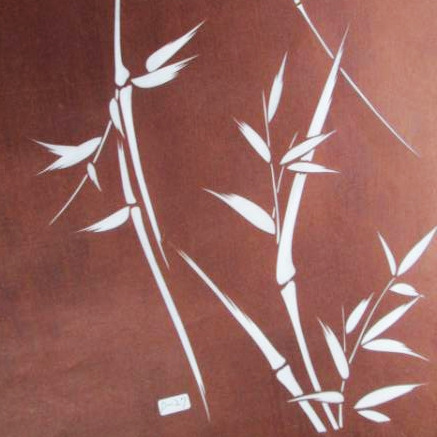

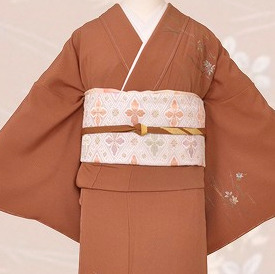
渋紙色 (Shibugami-iro) | #985E41 | “Tanned Paper”
Shibugami is thick brown paper made with layers of mulberry paper tanned with persimmon tannin and dried. It was used for stenciling and to make paper cones that are used like pastry bags to apply white rubber starch contouring in the yuzen dyeing technique.
This color is the origin of the name of Tokyo’s Shibuya district — the water of its iron-rich river was said to be shibugami-iro.
Shibugami-iro is also called kakiso-iro (柿衣色, “persimmon garment”) in reference to the persimmon tannin-dyed clothing worn by low-ranking samurai in the Heian period (794-1185). In the Edo period (1603-1868), servants working at liquor stores wore this color.
(Picture sources: 1, 2, 3 | More colors)
258 notes
·
View notes
Photo
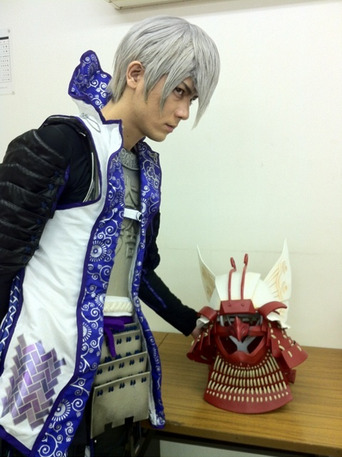
Mitsun….what are you doing…..that’s Gyobu’s..

Oh.
173 notes
·
View notes
Text
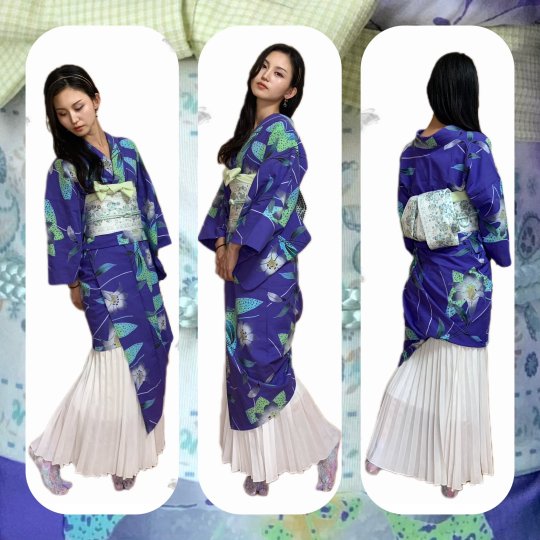
Cute modern kimono styling, pairing a yukata styled with shirippashori (back hem tuck) with a long skirt beneath
217 notes
·
View notes
Text
Thank you so much for this ♥️ they both look so beautiful, I'm sure they can be the bestest friends!
I'm glad you like Ginchiyo's design, it took me a while before I could figure it out.
Hope to see more of your beautiful works ♥️♥️♥️
Tachibana and Nata Duo

Gift for @milky-rozen @onnajosshumiwa because I am loving her Ginchiyo 💙💙🧡🧡
The inclusion of Lady Nata came from me vaguely remembering Milky mentioning how my Lady Nata's situation with Sōrin reflects Muneshige's situation with Ginchiyo and inspo arrived. 😳
Working with the orange and blue color palette with Ginchiyo was so fun 💙 And ofc when I saw Ginchiyo's outfit for the first time, the sleeves immediately made me think of European Renaissance clothing with large poofy sleeves like this for example:
https://blog.bridgemanimages.com/hs-fs/hubfs/Imported_Blog_Media/Licinio_lady-1.jpg?width=759&height=899&name=Licinio_lady-1.jpg
And ofc I couldn't keep the patterns of Ginchiyo's outfit out because including the patterns pull her sleeves together 🧡💙
I am planning to draw Milky's Ginchiyo again since I found some interesting outfits that are Ginchiyo's concept outfits in Nobunaga's Ambition and that have Milky's Ginchiyo's color palette 💙🧡😳
#戦国BASARA#art exhibition#support the artist#Op's OC#my OC#(OC) Ginchiyo Tachibana#sengoku basara#sengoku basara oc
8 notes
·
View notes
Photo


Han-Juban
Taisho period (1912-1926)
A silk under-kimono garment featuring a faux-shibori-patterned cotton body, and shibori silk sleeves
174 notes
·
View notes
Text
I'll forever be grateful for this, really.
You did an amazing job portraying her and I'm so happy you liked my Asa 🤧 I promise I'll be making more art of her in the future! Cause you serious made me miss her!
❄The Snow Queen❄


I forgot I had this drawing of Asa for @onnajosshumiwa @milky-rozen saved in my drafts. 😳 I love Asa's design and most of all Asa and her owner's lovely artwork and such. 💙💙💖💖
Coloring this took an eternity to finish because let's just say the colors looked pretty heavy while I was adding in the shading but I began to feel better as soon as I began adding the lighting.
Since Asa is an ice user, I felt like having her in an atmosphere of winter with pink, purple and blue hues would suit her. And ofc I feel like here she's walking by a sliding screen door with a design with pine trees but with snow.
10 notes
·
View notes
Photo
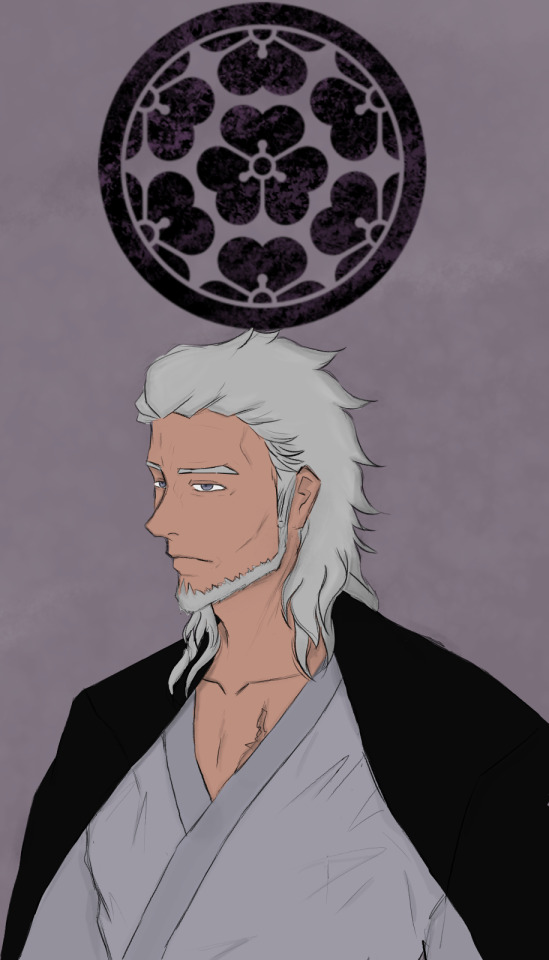
It has been quite some time since I took a Basara hiatus, but I can’t deny the fact that I missed my OCs to no end, especially the old man ❤︎
#favorite OC EVER#KUNICHIKA-SAMAAAAAAA#He's so handsome#Sengoku Basara#Chosokabe Kunichika#Chosokabe clan#Op's OC
8 notes
·
View notes
Photo
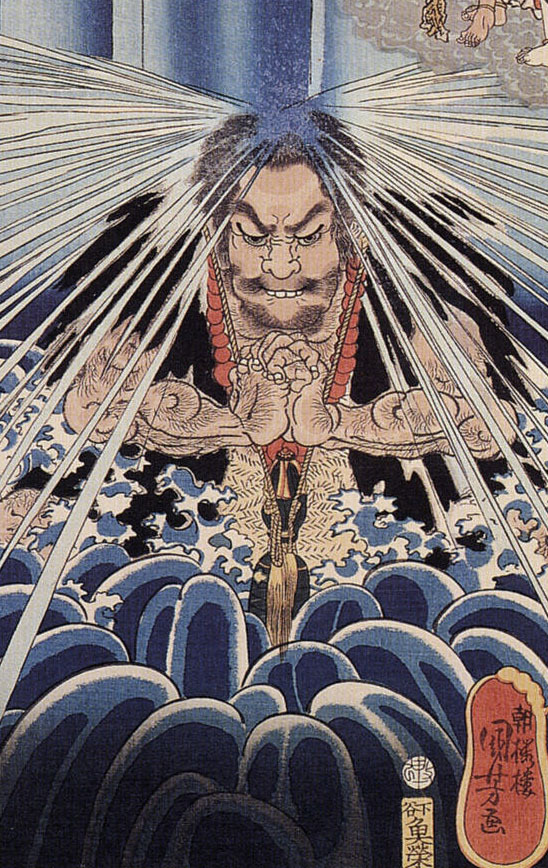

Kuniyoshi Utagawa: Mongaku doing penace at the Nachi waterfall
117 notes
·
View notes
Photo
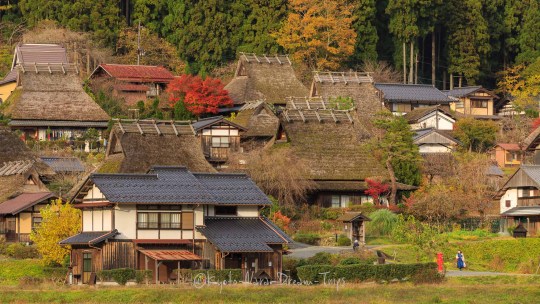
Autumn colours, pampas grass and a thatched roof at the Kayabuki no Sato (Thatched Roof Village) in Miyama in Rural Kyoto Prefecture, Japan.
180 notes
·
View notes
